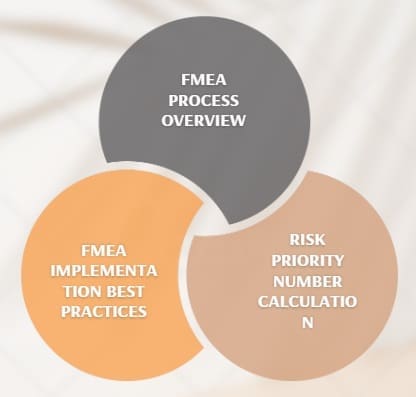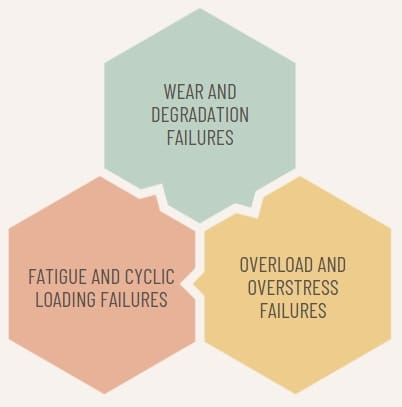Failure mode represents the specific way in which a system, component, or process ceases to perform its intended function. Understanding these failure patterns enables organizations to implement proactive maintenance strategies, improve reliability, and prevent costly breakdowns before they occur.
Modern industries rely heavily on failure mode analysis to enhance product quality, ensure safety, and optimize operational efficiency. Furthermore, systematic identification and prevention of failure modes contribute significantly to customer satisfaction, regulatory compliance, and competitive advantage.
Organizations that master failure mode analysis consistently achieve higher reliability rates, reduced maintenance costs, and improved safety performance across their operations.
Table of contents
Understanding Failure Mode Fundamentals
A failure mode describes the manner in which a component, system, or process fails to meet its specified requirements or performance standards. These failures can manifest as complete cessation of function, degraded performance, or unintended operation outside acceptable parameters.
Failure modes occur across all industries and applications, from mechanical components in manufacturing equipment to software bugs in digital systems. Each failure mode has unique characteristics, causes, and consequences that require specific prevention and mitigation strategies.
The systematic study of failure modes enables engineers and reliability professionals to design more robust systems while developing effective maintenance strategies. Additionally, understanding failure patterns helps organizations allocate resources efficiently and prioritize improvement efforts based on risk and impact assessments.
Public, Onsite, Virtual, and Online Six Sigma Certification Training!
- We are accredited by the IASSC.
- Live Public Training at 52 Sites.
- Live Virtual Training.
- Onsite Training (at your organization).
- Interactive Online (self-paced) training,
Types of Failure Modes in Different Systems

Mechanical Failure Modes
Mechanical systems experience various failure modes including wear, fatigue, corrosion, fracture, and deformation. These failures typically result from stress, environmental conditions, material properties, or design limitations that exceed component capabilities.
Wear failures occur gradually through normal operation, while fatigue failures develop from repeated loading cycles. Corrosion failures result from chemical reactions with environmental elements, and fracture failures happen when stress exceeds material strength limits.
Understanding mechanical failure modes enables maintenance teams to implement appropriate lubrication schedules, material selections, and inspection procedures. Moreover, this knowledge supports design improvements that enhance component durability and system reliability.
Electrical Failure Modes
Electrical systems exhibit failure modes such as short circuits, open circuits, ground faults, insulation breakdown, and component overheating. These failures can result from voltage fluctuations, environmental exposure, component aging, or installation defects.
Short circuit failures create dangerous conditions by allowing excessive current flow, while open circuit failures interrupt intended electrical paths. Insulation breakdown failures compromise system safety and can lead to equipment damage or personnel injury.
Electrical failure mode analysis helps engineers design protective systems, select appropriate components, and establish testing protocols. Additionally, understanding electrical failures supports troubleshooting efforts and guides preventive maintenance activities.
Software Failure Modes
Software systems experience failure modes including logic errors, memory leaks, interface failures, security vulnerabilities, and performance degradation. These failures can result from coding mistakes, system interactions, resource limitations, or external attacks.
Logic error failures produce incorrect outputs or behaviors, while memory leak failures gradually consume system resources. Interface failures disrupt communication between system components, and security vulnerability failures expose systems to unauthorized access.
Software failure mode analysis guides testing strategies, code review processes, and security implementations. Furthermore, understanding software failures supports version control practices and change management procedures.
Process Failure Modes
Business processes exhibit failure modes such as bottlenecks, quality defects, communication breakdowns, resource shortages, and timing delays. These failures can result from inadequate procedures, insufficient training, system limitations, or external factors.
Bottleneck failures restrict process flow and reduce overall capacity, while quality defect failures produce unacceptable outputs. Communication breakdown failures disrupt coordination between process steps, and resource shortage failures prevent process completion.
Process failure mode analysis supports continuous improvement initiatives, training program development, and resource planning activities. Additionally, understanding process failures guides automation decisions and workflow optimization efforts.
Also Read: Failure Mode Effects and Criticality analysis (FMECA)
Failure Mode and Effects Analysis (FMEA) Methodology

FMEA Process Overview
Failure Mode and Effects Analysis provides a systematic approach for identifying potential failure modes, analyzing their effects, and prioritizing prevention actions. This methodology helps teams proactively address reliability issues before they impact operations or customers.
FMEA involves cross-functional teams that systematically examine each component or process step to identify potential failures. Teams then assess failure effects, determine causes, and evaluate current controls before calculating risk priority numbers for action prioritization.
The structured approach ensures comprehensive failure analysis while facilitating team collaboration and knowledge sharing. Moreover, FMEA documentation serves as valuable reference material for future design projects and improvement initiatives.
Risk Priority Number Calculation
Risk Priority Number (RPN) calculation combines severity, occurrence, and detection ratings to prioritize failure modes for corrective action. This quantitative approach helps teams focus resources on the most critical failure risks.
Severity ratings assess the impact of failure effects on customers, safety, or operations. Occurrence ratings evaluate the likelihood of failure causes happening, while detection ratings measure the effectiveness of current control methods.
Teams multiply these three ratings to calculate RPN values, with higher numbers indicating greater priority for improvement actions. This mathematical approach provides objective criteria for resource allocation and improvement planning decisions.
FMEA Implementation Best Practices
Successful FMEA implementation requires experienced facilitators, diverse team composition, and systematic documentation practices. Teams should include subject matter experts from design, manufacturing, quality, and service functions to ensure comprehensive analysis.
Regular FMEA reviews and updates maintain analysis currency as products and processes evolve. Teams should schedule reviews during design changes, process modifications, or when new failure modes are discovered through field experience.
Documentation standards ensure consistent analysis quality and facilitate knowledge transfer between teams and projects. Furthermore, FMEA databases enable trend analysis and support organizational learning initiatives.
Common Failure Mode Categories Across Industries

Wear and Degradation Failures
Wear and degradation failures occur gradually through normal operation and represent the most common failure modes in mechanical systems. These failures result from friction, chemical reactions, thermal cycling, or material property changes over time.
Abrasive wear failures happen when hard particles damage surface materials, while adhesive wear occurs when contacting surfaces stick together. Corrosive wear combines chemical attack with mechanical action to accelerate material loss.
Preventive maintenance strategies effectively address wear and degradation failures through scheduled replacements, condition monitoring, and protective treatments. Additionally, material selection and design improvements can significantly extend component life.
Overload and Overstress Failures
Overload and overstress failures occur when applied forces, temperatures, pressures, or electrical loads exceed component design limits. These failures typically happen suddenly and can cause catastrophic damage to systems.
Mechanical overload failures result from excessive forces that exceed material strength, while thermal overload failures occur when temperatures surpass material limits. Electrical overload failures happen when current or voltage levels exceed component ratings.
Protection systems including circuit breakers, pressure relief valves, and temperature sensors help prevent overload failures. Moreover, proper sizing, safety margins, and operating procedures reduce the likelihood of overstress conditions.
Fatigue and Cyclic Loading Failures
Fatigue failures develop from repeated loading cycles that gradually weaken materials even when individual loads remain below static strength limits. These failures often occur without warning and can have severe consequences.
High-cycle fatigue affects components subjected to many low-stress cycles, while low-cycle fatigue involves fewer high-stress cycles. Thermal fatigue results from temperature changes that cause expansion and contraction stresses.
Fatigue analysis during design phases helps identify critical locations and guide material selection decisions. Additionally, inspection programs and condition monitoring techniques enable early detection of fatigue damage before catastrophic failure occurs.
Also Read: Failure Mode Effects Analysis (FMEA)
Failure Mode Analysis Tools and Techniques

Root Cause Analysis Methods
Root cause analysis techniques help identify underlying causes of failure modes rather than addressing symptoms alone. These methods include fishbone diagrams, five whys analysis, fault tree analysis, and statistical investigation approaches.
Fishbone diagrams systematically explore potential causes across categories such as materials, methods, machines, and environment. Five whys analysis uses iterative questioning to trace failure symptoms back to fundamental root causes.
Fault tree analysis employs logical structures to model failure scenarios and identify critical failure paths. Statistical analysis reveals patterns in failure data that guide prevention strategies and improvement priorities.
Condition Monitoring Technologies
Condition monitoring technologies enable early detection of developing failure modes before they cause system breakdowns. These technologies include vibration analysis, thermal imaging, oil analysis, and acoustic monitoring techniques.
Vibration analysis detects mechanical problems such as misalignment, imbalance, bearing wear, and looseness through frequency domain analysis. Thermal imaging identifies overheating components, electrical faults, and insulation problems through temperature measurement.
Oil analysis reveals internal component wear, contamination, and degradation through chemical and physical testing. Acoustic monitoring detects changes in equipment sound signatures that indicate developing problems.
Predictive Maintenance Strategies
Predictive maintenance strategies use condition monitoring data to schedule maintenance activities based on actual equipment condition rather than time intervals. This approach optimizes maintenance resources while preventing unexpected failures.
Data analytics and machine learning algorithms analyze condition monitoring information to predict remaining useful life and optimal maintenance timing. These technologies enable maintenance teams to plan work efficiently while minimizing downtime.
Predictive maintenance programs typically achieve significant cost savings compared to reactive or time-based maintenance approaches. Moreover, these strategies improve safety by preventing catastrophic failures and reducing emergency repair situations.
Industry-Specific Failure Mode Applications
Automotive Industry Applications
Automotive manufacturers employ extensive failure mode analysis to ensure vehicle safety, reliability, and performance. Critical systems such as brakes, steering, engines, and safety restraints receive particular attention during FMEA activities.
Warranty data analysis reveals common failure modes that guide design improvements and service training programs. Field failure investigations provide valuable feedback for future product development and quality enhancement initiatives.
Supplier quality programs require FMEA completion for critical components and systems. These requirements ensure that failure mode analysis extends throughout the supply chain to support overall vehicle reliability.
Aerospace Industry Standards
Aerospace applications demand extremely high reliability due to safety criticality and limited maintenance access. Failure mode analysis plays essential roles in design certification, maintenance planning, and operational safety management.
Federal Aviation Administration regulations require comprehensive failure mode analysis for aircraft systems and components. These analyses must demonstrate acceptable safety levels and identify necessary maintenance actions.
Redundancy and fault tolerance design principles address critical failure modes by providing backup systems and graceful degradation capabilities. Additionally, rigorous testing programs validate failure mode predictions and prevention strategies.
Manufacturing Process Applications
Manufacturing operations use failure mode analysis to improve product quality, reduce waste, and optimize production efficiency. Process FMEA examines each manufacturing step to identify potential failure modes and their effects on product quality.
Statistical process control techniques monitor process parameters to detect developing failure modes before they produce defective products. Control charts and capability studies guide process improvement and failure prevention efforts.
Maintenance optimization programs use failure mode analysis to prioritize equipment improvements and establish effective maintenance schedules. These programs balance maintenance costs with production reliability requirements.
Healthcare System Reliability
Healthcare organizations apply failure mode analysis to improve patient safety, reduce medical errors, and enhance care quality. Clinical processes, medical equipment, and information systems receive systematic failure mode evaluation.
Joint Commission standards require healthcare facilities to conduct proactive risk assessments including failure mode analysis for high-risk processes. These assessments identify potential patient safety hazards and guide improvement actions.
Medical device manufacturers must complete comprehensive FMEA studies during product development to ensure safety and effectiveness. Regulatory agencies review these analyses during approval processes to verify adequate risk management.
Technology Integration in Failure Mode Management
Digital Twin Applications
Digital twin technology creates virtual representations of physical systems that enable real-time failure mode monitoring and prediction. These digital models integrate sensor data, simulation capabilities, and machine learning algorithms.
Digital twins can simulate various operating conditions and failure scenarios to test system responses and evaluate improvement strategies. This capability accelerates design optimization and reduces physical testing requirements.
Predictive analytics algorithms analyze digital twin data to identify developing failure modes and recommend maintenance actions. Real-time monitoring enables immediate response to changing conditions and emerging failure risks.
Artificial Intelligence and Machine Learning
Artificial intelligence technologies enhance failure mode analysis through pattern recognition, predictive modeling, and automated analysis capabilities. Machine learning algorithms can identify failure patterns that human analysts might miss.
Natural language processing techniques analyze maintenance records, inspection reports, and failure descriptions to extract failure mode information automatically. This automation reduces manual effort while improving analysis consistency.
Predictive models use historical failure data to forecast future failure modes and their timing. These models enable proactive maintenance planning and resource allocation optimization.
Internet of Things (IoT) Integration
IoT sensors provide continuous monitoring capabilities that enable real-time failure mode detection and analysis. Wireless sensor networks collect data from distributed systems and equipment throughout facilities.
Edge computing capabilities process sensor data locally to identify immediate failure risks and trigger alerts. Cloud-based analytics platforms aggregate data from multiple sources to identify broader failure patterns and trends.
IoT integration enables condition-based maintenance strategies that respond to actual equipment conditions rather than predetermined schedules. This approach optimizes maintenance timing while preventing unexpected failures.
Best Practices for Failure Mode Prevention
Design for Reliability Principles
Design for reliability principles incorporate failure mode prevention strategies during product and system development phases. These approaches address potential failures before they can occur in operational environments.
Robust design techniques ensure that products perform acceptably despite manufacturing variations, operating conditions, and component tolerances. Safety margins and redundancy provisions protect against overload and single-point failure conditions.
Design reviews and validation testing verify failure mode prevention effectiveness before products enter service. These activities identify potential problems early when correction costs remain relatively low.
Maintenance Strategy Optimization
Effective maintenance strategies balance failure prevention with resource constraints to achieve optimal reliability and cost performance. These strategies must consider failure mode characteristics, consequences, and detection capabilities.
Preventive maintenance addresses time-dependent failure modes through scheduled replacements and overhauls. Predictive maintenance targets condition-dependent failures through monitoring and analysis programs.
Maintenance task optimization considers failure mode criticality, cost, and effectiveness to prioritize resource allocation. Risk-based maintenance approaches focus efforts on failure modes with the greatest potential impact.
Training and Knowledge Management
Training programs ensure that personnel understand failure modes relevant to their responsibilities and have skills necessary for prevention and response activities. These programs should cover both technical knowledge and practical application.
Knowledge management systems capture failure mode information, lessons learned, and best practices for organizational use. These systems support decision-making and prevent knowledge loss when experienced personnel leave.
Cross-functional collaboration between design, operations, and maintenance teams facilitates comprehensive failure mode understanding and prevention. Regular communication ensures that field experience informs design improvements.
Measuring Failure Mode Management Effectiveness
Key Performance Indicators
Reliability metrics including mean time between failures, availability, and failure rates provide quantitative measures of failure mode management effectiveness. These metrics enable objective assessment of improvement program results.
Cost metrics such as maintenance expenses, downtime costs, and warranty claims demonstrate the financial impact of failure mode prevention efforts. Return on investment calculations justify continued investment in reliability programs.
Safety metrics including incident rates, near misses, and safety audit results measure the effectiveness of failure mode prevention in protecting personnel and the public. These metrics are particularly important for high-risk industries.
Continuous Improvement Processes
Continuous improvement processes use failure mode data to identify enhancement opportunities and guide resource allocation decisions. These processes should be systematic, data-driven, and focused on preventing recurrence.
Failure mode trending analysis reveals patterns that indicate systemic issues requiring attention. Root cause analysis of significant failures identifies underlying problems that prevention programs should address.
Benchmarking activities compare failure mode performance against industry standards and best-in-class organizations. These comparisons identify improvement opportunities and validate program effectiveness.
Final Words
Understanding failure modes is essential for identifying potential weaknesses in products, systems, or processes before they lead to costly breakdowns.
By analyzing failure modes proactively through tools like FMEA, organizations can enhance product reliability, reduce risk, and improve overall quality.
Whether in manufacturing, engineering, or service industries, recognizing and addressing possible failure modes early on is key to preventing defects, ensuring safety, and maintaining customer satisfaction. Implementing a robust failure mode analysis strategy supports continuous improvement and long-term operational success.
Frequently Asked Questions
Q: What is a failure mode and how is it different from a failure cause?
A failure mode describes how a system or component fails to perform its intended function, while a failure cause represents the underlying reason why the failure occurs, such as wear, overload, or design defects.
Q: What are the most common types of failure modes in mechanical systems?
Common mechanical failure modes include wear, fatigue, corrosion, fracture, deformation, and overload failures, each resulting from different stress conditions, environmental factors, or material limitations.
Q: How does Failure Mode and Effects Analysis (FMEA) help prevent failures?
FMEA systematically identifies potential failure modes, analyzes their effects and causes, and prioritizes prevention actions using risk priority numbers, enabling proactive failure prevention rather than reactive responses.
Q: What role does condition monitoring play in failure mode management? A: Condition monitoring technologies enable early detection of developing failure modes through techniques like vibration analysis, thermal imaging, and oil analysis, allowing maintenance teams to address problems before catastrophic failures occur.
Q: How can organizations measure the effectiveness of their failure mode prevention programs?
Organizations can measure effectiveness through reliability metrics like mean time between failures, cost metrics including maintenance expenses and downtime costs, and safety metrics such as incident rates and near misses.
Q: What industries benefit most from systematic failure mode analysis?
All industries benefit from failure mode analysis, but aerospace, automotive, healthcare, manufacturing, and energy sectors particularly rely on these techniques due to safety criticality, regulatory requirements, and reliability demands.
Q: How do digital technologies enhance traditional failure mode analysis approaches?
Digital technologies including IoT sensors, artificial intelligence, and digital twins provide real-time monitoring, predictive analytics, and automated analysis capabilities that enhance traditional failure mode identification and prevention methods.




















